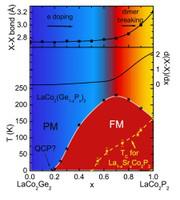-

- Cava
Determining how crystal structure and chemical bonding influence the properties of solids is at the heart of collaborative research programs between materials physicists and solid state chemists. In some important electronic materials - the high Tc copper oxides and colossal magnetoresistance manganates for example - stoichiometry, structure, bonding, and properties are coupled to yield an almost baffling complexity of chemistry-physics relationships, while in others, such as many classical intermetallic superconductors, bonding and structure play a much less profound role. The new superconducting iron pnictides, the materials with the second highest known superconducting transition temperatures after the high Tc cuprates, appear to fall somewhere between these two limits, and thus their complexities might at first be easily overlooked. Here I will describe some of our recent work on superconducting FeSe and superconductor-related cobalt-based ThCr 2 Si 2 -type solid solution phases as examples of the kinds of insights that structural and chemical studies can contribute to understanding the electronic properties of important electronic materials. If time permits, then I will also describe some chemical aspects of the new topological insulators that I have recently been studying with my Princeton Physics collaborators.

